3 Days in Tokyo - Cherry Blossoms, Shrines and Gardens
- Fernanda Fisher
- Apr 28
- 16 min read

After a 13-day cruise around Japan's Southern Islands, we had the opportunity to explore Tokyo. Though brief, our visit offered a fascinating glimpse into Tokyo's vibrant life and culture.
We stayed at the Sunroute Plaza Shinjuku, conveniently located in the heart of Shibuya and near several train lines, making it an ideal base for exploring Tokyo. The hotel was clean and efficiently run. Unlike Western hotels, check-in is done at an automated kiosk where you scan your passport and credit card to receive your key. Assistance is available if needed.

The hotel has a breakfast spot that serves some Western breakfast foods along with Chinese and Japanese. There is also a place to get dinner, but with a city full of amazing food, and restaurants all around the hotel's location, we never ate there.
Our room featured two twin beds, a bath/shower combination, and a desk and chair. Bonus for me was the very decent lighting for pre-bed reading.
I planned our visit based on geographic areas of the city. I determined what I felt we needed to see on our first trip including gardens, art and religious sites. Instead of trying to navigate on our own we went through Viator and found three separate guides to show us around. What you will read here is a summary of our trip and the unplanned adventures we took. This itinerary is great if you love art, gardens, shrines, and temples. It was not a shopping tour.
Day One

Our first day was marred by steady rain, which, combined with a fast-paced tour guide, made it less enjoyable. We had three different Viator guides and it actually worked out well for two reasons. First, the information and interests of each guide were different giving three different perspectives. Second, had we only had the first guide, we would have seen a lot but retained very little. We weaved like race car drivers through pedestrian traffic, walked on the wrong side of the stairs in the train station, and were subject to his opinions on what was worth seeing.
On this day we were to see Shibuya Crossing, Omotesando, Yoyogi Park and the Meiji Shrine. Since we arrived before our room was ready, and the guided tour to start, we went to explore Shinjuku Station. We wanted to see if we could figure out how to get train cards on our own. We also were hungry. Japan train stations are like underground malls where you can get snacks, buy flowers, have coffee, and shop all in one place!

On a rainy morning it made for an excellent opportunity to people watch and try out navigating on our own. While there are signs in English telling you train line names, most people do not speak English. Menus do not always provide English translations so remember to have a translation app on your phone to help. Navigating for the first time here can and is terrifying until you get in to a groove.

We found a coffee/tea shop called Sarutaheko coffee which was a tiny place in the station. It served both a good cup of coffee and an excellent, lightly sweetened matcha tea. Matcha in Japan is not like those sweet drinks served in Starbucks. It's matcha powder, whisked with milk and a little sugar.

Matcha has almost as much caffeine as coffee and tastes delicious. Next to the coffee served in Ethiopia that I drank while on travel with a friend, matcha is my favorite go-to brew. We sat at the shop for about thirty minutes just absorbing the sights and sounds of this bustling city.
Slowing down and enjoying a new city comes with additional perks. While sipping our beverages a couple with a precocious two year old sat next to us. They were stopping through Tokyo on their way to teach a yoga seminar. We had a delightful conversation and I told her all about what we had seen.
When we met our guide, we briefly discussed the four hours of touring with him and then took off at a brisk pace. I wish I remembered more details from this day. The rain made it difficult for me to observe much under my umbrella. And our guide wanted to show us what he thought was interesting more than what I wanted to see.
Tour 1 - Exploring (Mostly) Modern Tokyo
Our first stop was Meiji Jingu, a Shinto shrine. This visit hinted that our day might not go as planned. Instead of respecting the sacredness of this Shinto shrine by going around the torii gate, and instructing us to not walk on the gravel path, he strode right down the middle and under the gate. Only the gods may use the gravel path and walk through the gate.


Meiji Jingu is set in a massive park filled with trees and peace. There are several torii gates to pass before reaching the shrine itself. Once inside, the shrine is comprised of several wooden buildings. The faithful come to ask for favors by writing on wooden postcard sized boards that are hung on racks. Anyone who believers can write a wish and pay a small fee to have it hung.
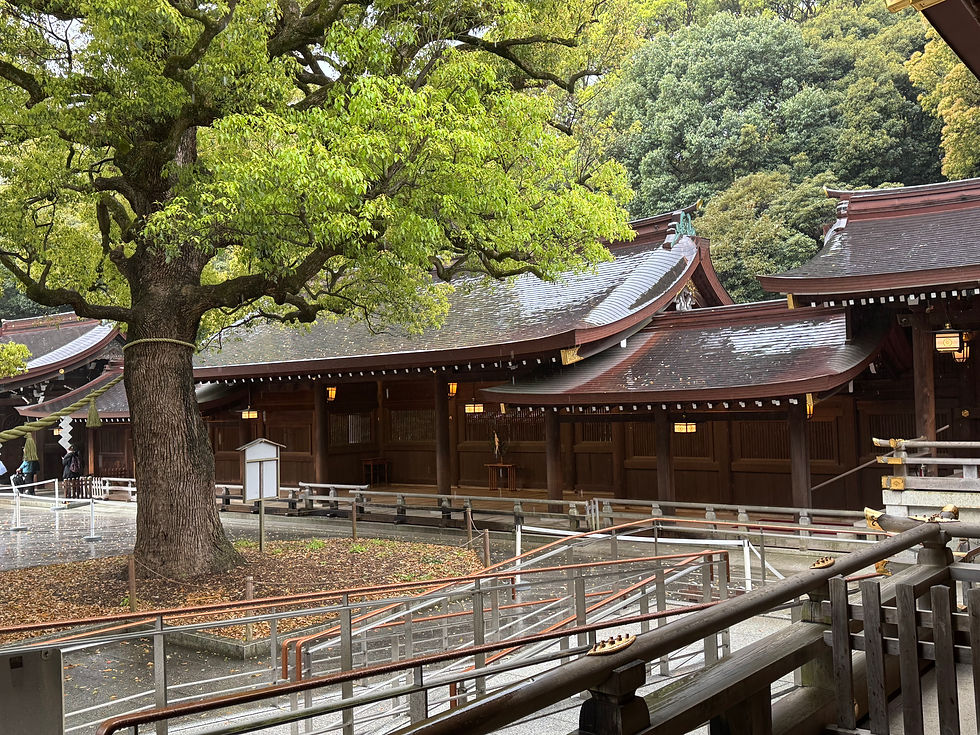
While we were there, we saw part of a formal Shinto wedding. I snapped a photo and then a guard came rushing at me with a hand help placard with symbols the international no photo symbol. We saw several wedding shoots during our trip to Japan but this was the only one during a temple ceremony.

If you have a chance to visit Meiji, make sure you visit the Meiji Jingu Gyoen, a traditional garden just off the main path. Our guide said it was not worth it and I sadly didn't insist.
Leaving the shrine we walked around Shibuya's streets. Taking in a live radio show behind a plate glass window, similar to NYC set of Good Morning America. Walked past narrow streets that come alive at night for eating and drinking. On a later sake/food tour we were able to visit several of these places when they were jammed with Japanese and tourists.
Shibuya Crossing from above
As the rain persisted, we headed to the 17th floor of an office building to get a bird's-eye view of the bustling Shibuya Crossing. This is the busiest intersection in Tokyo, and perhaps the world. Gazing down from above is the way to really view this wonder.
With streets coming in at angles and masses of people, it looked like thousands of little ants busily working. And it was only Sunday!

Quickly keeping up the pace with our guide, we rounded a construction site corner and came face-to-face with the bronze statue of Hatchiko the dog. If you are unfamiliar with the story, for many years after the man died, the little dog came back to the place he last saw his master. His loyalty is legendary, and people come from around the world as sort of a pilgrimage. As a dog lover, I found this work, and the masses coming to touch is sides and paws, very touching.
Japan is known for technology and Tokyo has amazing electronic billboards. There is an animated billboard of a cat doing all sorts of cat-like things that I had to see. Our guide thought I was nuts but he looked up the location and took us. I stood through several cycles of commercials, the true purpose of the billboards, just to see the cat's antics.
It meows (out loud for people below to hear), knocks things off a countertop, peers through a box, and even swishes its tail during the commercials. Watching this made me long for my cat obsessed daughter and friends who were not here to share it with me. There are also dog and panda boards elsewhere in Tokyo. We only saw the cat and the panda and I found the cat far more entertaining.

Inside a building this brightly lit izakaya restaurant is hard to miss
We visited an area where Japanese youth frequent. Loud and bright, we saw a video arcade, a store made up of what looked like gum-ball machines, and an izakaya restaurant full of bright neon lights.
Do you remember the craze for jelly bracelets, silly bandz or Japanese erasers shaped like food? If you have kids, you likely remember being asked for quarters to collect little plastic eggs with trinkets inside. Imagine an entire store filled with little dispensers where people try to collect the rarest items. This is baseball card trading and collecting to an extreme and it was fascinating.
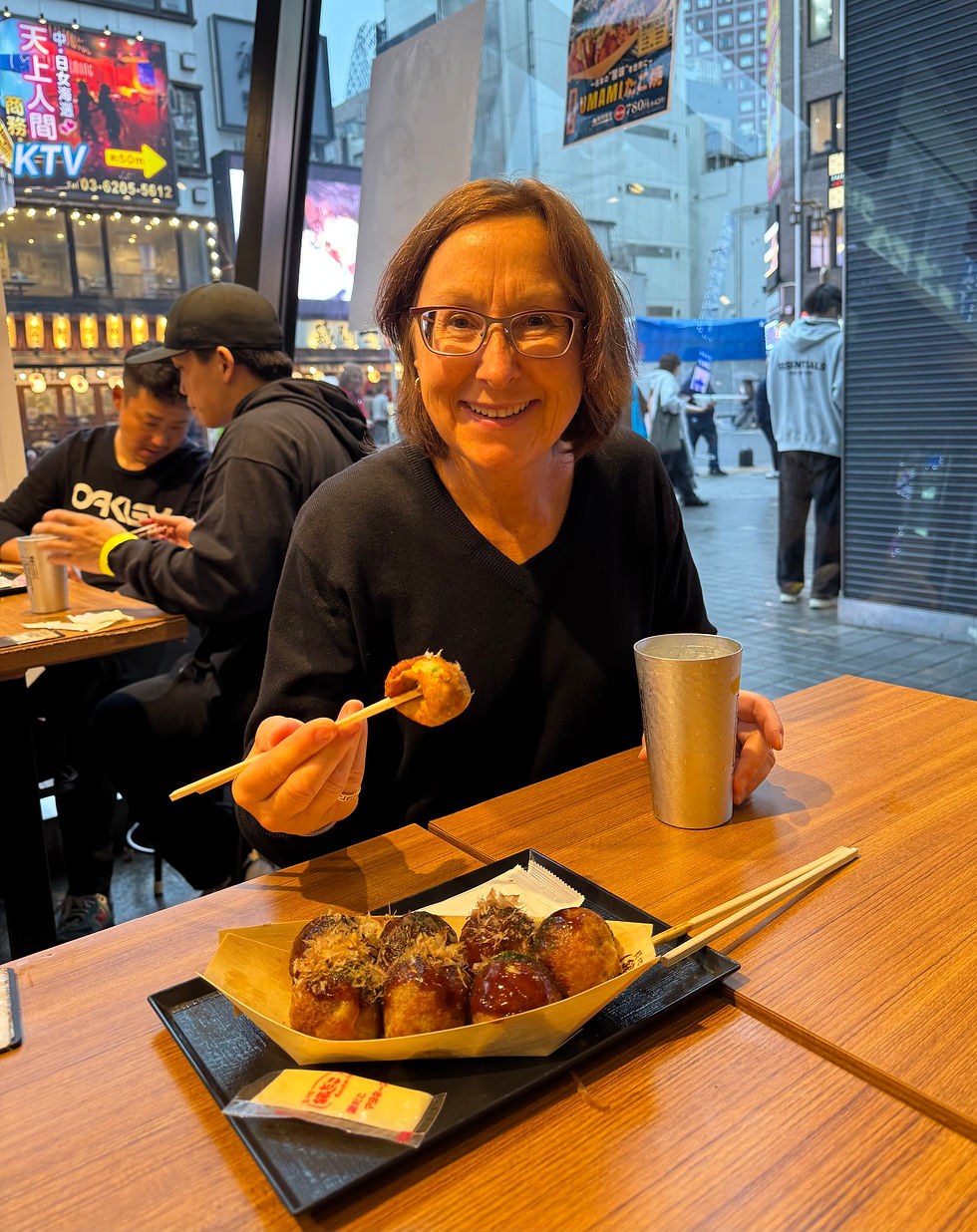
The reward for speeding through the day was a fun trip to a shop that sold takoyaki, or octopus balls, and a special lemon refresher. Octopus balls are a street food made of batter and a small piece of octopus. It may sound odd but it is absolutely delicious. The lemon drink is made of fresh squeezed lemons, shochu (a fermented drink similar to vodka) and a small dash of sweetener.
Day 2
Tour 2 - Iconic/Imperial Tokyo

On our second day, we had a longer tour with a new guide, Cristiano, who has lived in Japan for 30 years despite being born in Brazil. Unlike the first guide who was also a non-native speaker, he was fluent in Japanese history and customs. Today I scheduled a tour of the Imperial Palace grounds and the East Garden. Sadly it was not open but Cristiano promised to find other beautiful places to visit.
With gorgeous weather, it made for a super day of exploring. The new Imperial Palace and the remains of the old are both located on the same grounds. Surrounded in part my a large mote, we were able to glimpse a piece of the old castle. If you go to visit this area around lunch time, grab a box lunch from a street vendor and sit on a bench overlooking the palace. Even with people all around, the atmosphere was peaceful. Don't worry if it isn't open - it is still worth the time.


Our first surprise visit was to Gotokuji Temple in Setagaya ward famously known as the 'cat temple' because of the maneki-neko (beckoning cat). Legend has it that a warrior walked past the temple gates and saw a cat sitting out front. The cat was cleaning itself with its paw, giving the appearance that it was beckoning the warrior.

The warrior entered the temple, was pleased with what he saw, and became the temple's patron. If the maneki-neko cat's right paw is raised it means good luck. If the left is raised it means good fortune.
People come from all over to visit this temple. They buy small or large cat statues and leave them as offerings, much the same way they leave wood prayer offerings. As a cat lover I was in heaven.

Nezu Jinja shrine was our next stop. Considered one of Tokyo's most beautiful shrines, the main building is not as popular as Meiji Jingu or Senso-Ji. It is less of a tourist spot and more a place for locals. We were some of the only foreign visitors there.

This shrine is known for its exquisite display of azaleas in the spring. Cristiano warned us that it was not yet azalea season but that some should be out. We all were shocked by the sheer numbers of bushes in bloom already. And the colors were so vibrant that they glowed at times. Primarily in shades of pinks and purples there were some bushes that appeared to be hybrids of several shades.

With walk ways throughout the garden, and a beautiful set of red lacquer torii gates lined up as a tunnel next to them, there was an overpowering feeling of beauty and peace. If you are able to plan your visit to Tokyo for the cherry blossoms, make sure you visit here to see the azaleas as well.
Tour 3 Sake, Sochu and Food Tour in Ueno

This evening we met up with our friends Mary-Anne and Robert to go on a sake and food tour in the Ueno district. If you sign up for a food tour make sure you know if it's a group or private tour. We thought it was private but ended up with a group of fun loving young adults.
The mix of ages actually ressulted in a lively evening. They even invited us 'old folks' to hang out afterwards.
Our guide Aki's English skills were not stellar but it did not matter. Aki was a gregarious Japanese guide who claimed to be a Sake sommelier. He took us to a number of little snack shops. In each place, we were given a different kind of alcoholic beverage and some snacks to taste. In one place we had tempura bites and raw fish, another we had 'mystery' meat (offal) and beef, and at the last place we had delicious Tonkatsu ramen.

With a thick chicken stock base they add a soft boiled egg, ramen, nori and a spice paste on the side for extra seasoning. It was yummy. We have a favorite ramen spot in D.C. called Daikaya Ramen Shop. This was similar to Daikaya only in Japan.
Sake versus Shochu

Nihonshu is sake's formal name. It is a type of rice wine made from polished rice and then fermented. The higher the percentage of polished rice the better the quality of the sake. We were told that the mainstream sake is generally of poorer quality. I think sake has a very distinct taste.
We we were served sake we had a small lacquer box placed in front of us. Then, they placed a tall shot glass inside the box. Next the sake was brought out in a large glass bottle and they poured into the glass until it overflowed into the box. After saying Kanpai! (cheers) we took the glass and drank the liquid. Aki instructed us to drink from the box as well.
Sochu has a higher alcohol content and is similar to vodka. While sake is for shots or sipping shochu is for mixed drinks. Sochu is made of sweet potatoes, barley, buckwheat or rice. For me it has a more pleasing taste because I do not like to drink straight spirits. The lemonade refresher I had with the Takoyaki was shochu based.
Day 3
Tour 3 - Old Japan and North Tokyo

Our third guide, Lilian, originally from Australia, came to Japan for her masters program 20 years ago and decided to stay. Lilian was a pro at the train system and found the quickest ways to get us to our destinations.

We began at Shinjuku Gyoen where the cherry blossoms were still in bloom and the wisteria were starting to show. The warm temperatures in Japan sped up many of the typical bloom times this year.

It was a bit of a wander at the garden. Lilian was not great with maps and was not a garden lover. So, I consulted the map and then wandered along the paths that seemed appealing. This garden is spread out into many different areas and has both formal and informal areas. It is the kind of botanic garden you might find in large U.S. cities.

Wide open grassy areas were interspersed with ponds and bridges. People picnicked, strolled and took family photos. I loved that Shinjuku Gyoen had both a mother and child touch garden and a formal Japanese garden within walking distance of each other.

If you have visited the Chicago Botanic Garden you will understand the vast spaces and wide variety of Shinjuku. It should have consumed an entire leisurely day but we had limited time. If you enjoy gardens and admiring different kinds of plants, stay for several hours to absorb this place.

With my garden lust satisfied, we moved on to our first museum in Ueno-Koen. This is a park-like setting for both museums and flora. Ueno-Koen reminds me of Balboa Park in San Diego. You can visit museums and see cherry blossoms at the same time.

Located within this area are the Tokyo National Museum, National Museum of Nature and Science, National Museum for Western Art, Tokyo Metropolitan Art Museum, National Science Museum and the Ueno Zoo. It could take days to see it all and with this being our last day in Tokyo, we had to choose one. We concentrated on two areas in the Tokyo National Museum.
Hunkan or the Japanese Gallery, consists of 25 rooms that house Japanese art and antiquities. Each room has English information and explanations of the different periods and focus of each room. The Gallery of Horyu-Ji Treasurers was our second stop. This is an entire gallery of 7th Century objects from a temple in the Nara prefecture.
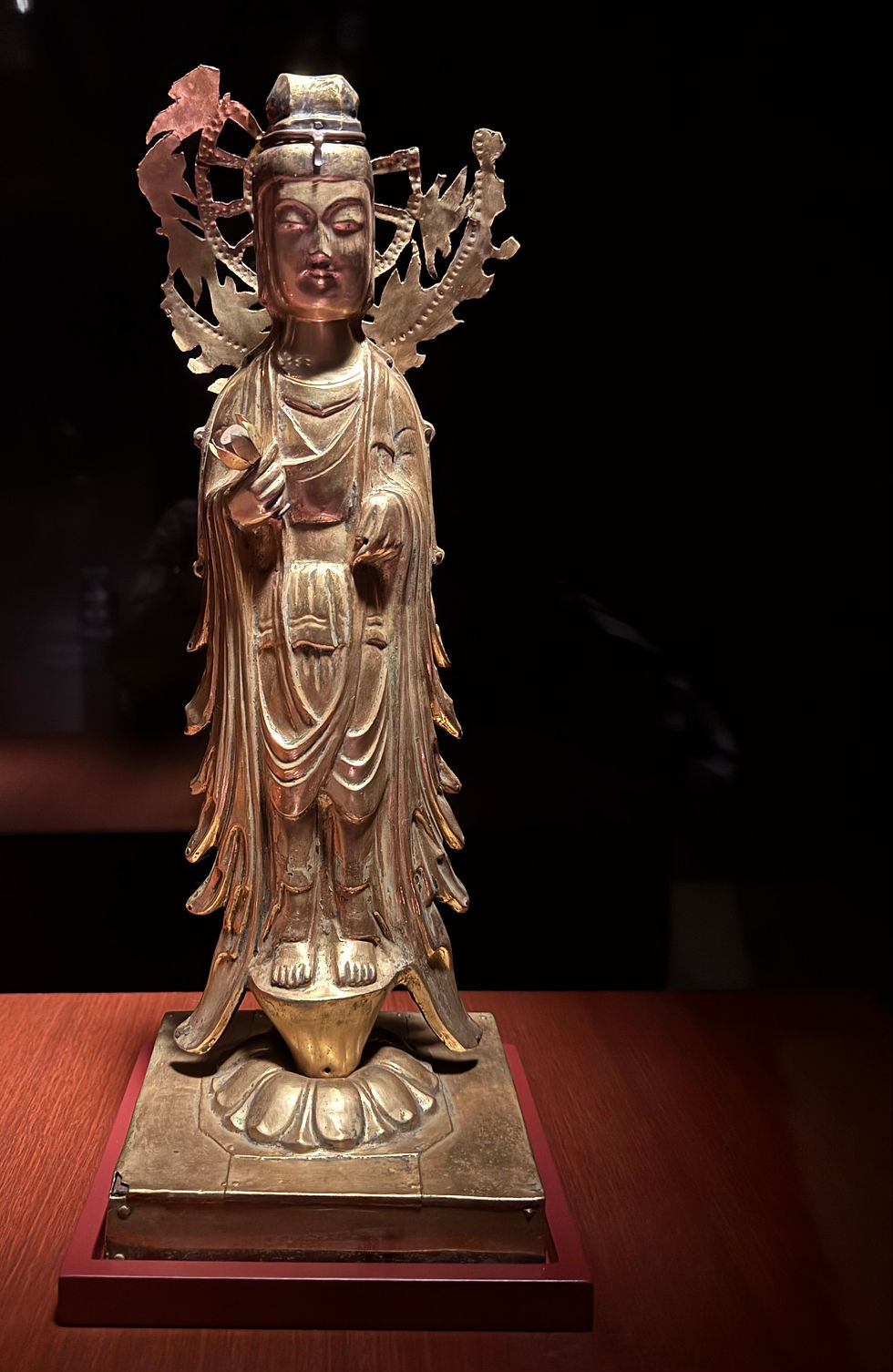
Even if this is not something that you would ordinarily be interested in make sure to at least walk through. Lilian clearly was not interested in art but even she slowed down to examine the beautifully preserved art. We all marveled over the pieces of kimonos and other textiles that survived for over 1000 years. If you are lucky enough to be in Tokyo during spring or fall you can have tea and snacks in some of the outdoor cafes near the museum.
Arakawa is another older area of Tokyo with more lowrise buildings and local people
Lilian suggested we go to Yanaka, an older part of the city next. Tangles of cable and electrical wires strung across roofs of buildings. Children and parents were shopping, older people were out walking and tourists mingled throughout.
It was nice to pause from historic sights and gardens for a while. We wandered in shops and observed people going about their daily lives. I also found a shop that sold matcha and had one last latte while we strolled.
Street scenes from the Yanaka area.
Make sure to find the street in Yanaka known for its hiding cats on the shop roofs and inside the stores. It may be a tourist gimmick, but it was fun to search the facades looking for felines. The Japanese really do love cats!

One of the great things about Japan is the portion sizes. They don't serve huge amounts of each item, but at the end of a meal you are fully satisfied. I wish we could replicate this in the U.S..
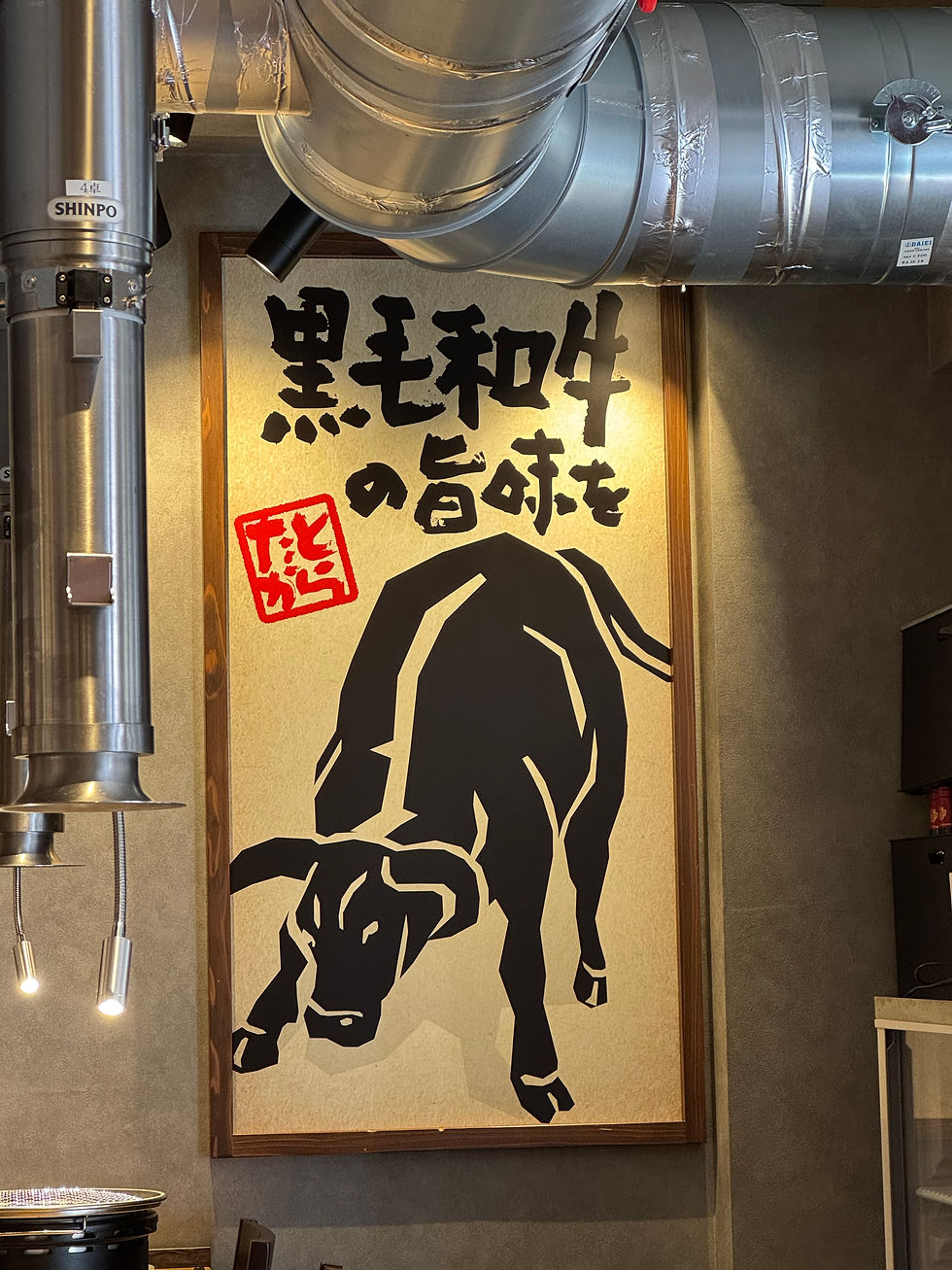
Lilian found a Korean spot where you grill your meats over a hibachi. We chose several types of meat for including black beef, tenderloin, and beef tongue. Meats are thinly sliced and flavorful. We also had green salad, kimchi and rice.
Shutterstock photo versus my photo of Senso-Ji shows the difference a crowd makes
Senso-Ji was the biggest disappointment of the day for me. Photos of the shrine are breathtakingly beautiful. As we entered the first gate for the shrine, the walkway was crowded with people and stalls selling things or renting kimonos. In the Shutterstock image above you can see the closed stalls. It reminded me more of a bazaar than a shrine. With over 30 million visitors a year, and it being a beautiful sunny day, I found it too crowded and impossible to enjoy.
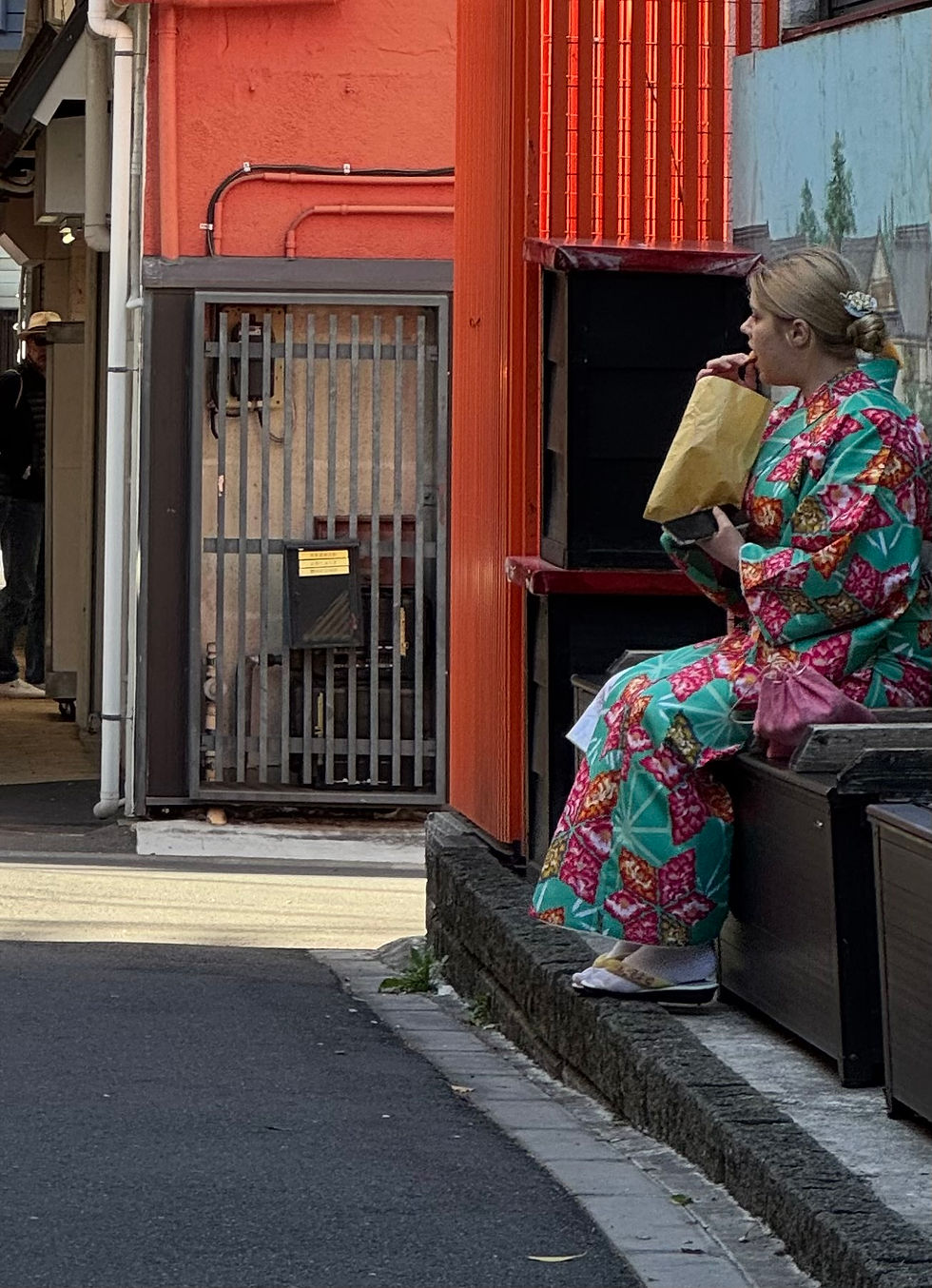
The big craze in Japan is to rent kimonos and get your photograph taken in them. Even the Japanese are excited to rent Kimonos and pretend to be living a different life. Lilian delivered a lecture about how disrespectful and silly it is to wear formal kimonos on a commercial street. As a tourist from the U.S. I had no idea who was real and who was renting unless they had tennis shoes on or were toting cameras.


The shrine was packed with worshippers, people in kimono costumes, and just plain touristsas so we turned around and left. Unless you can go early in the morning or late in the afternoon I would just avoid this place.
As a final stop on our tour we went to a Don Quijote shop. According to their website, "Don Quijote (commonly known as Donki) is a Japanese discount megastore chain. Famed for its wide range of products, eccentric atmosphere, and low prices, the chain is popular among locals and tourists alike. " To me, this was more like a mix of Dollar Store, Sephora, and HomeGoods on the Friday after Thanksgiving. Narrow aisles, loud music, crying babies and a lot of people.
Final Thoughts

Tokyo is a vibrant city, brimming with sights to see, nightlife to enjoy, and endless shopping opportunities. Much like New York City, there is something for everyone. The train system is expansive and well run so you do not need to take cabs unless you choose to. While we were not there long enough to take trains on our own, having mastered the London Underground, the Paris Metro, Boston's T and my own hometown D.C. Metro, I know we could have learned the system.
If You Go
To Stay
Hotel Sunroute Plaza Shinjuku
Reasonable rates and located near several train lines this makes for an excellent base.
To Eat
Dining in Japan is quite affordable. Don't limit yourself to hotel dining; explore local eateries for a more authentic experience. Across from our hotel there was an izakaya. Izakaya's are places where people come together to eat and drink at closely spaced tables. It is similar to dining at a German beer hall. There are English menus for easy ordering and staff will speak some English. They served everything from pizza to ramen across the street.
Book a food tour while you are there. I wish we had taken more than one since it was both fun and an easy way to navigate through a menu.
To Take a Tour
We used Viator https://viator.com for all our day and night tours. Make sure to sign up early and review their information thoroghly. If you come to town with a list of places to see, make it very clear to the provider and to your guide.
To Take a Train
You can choose from several Japan Railroad apps for the trains so load it before you go. Our guides utilized google maps to help them navigate. Cell reception is plentiful here so buy a local sim card and use your smart phone to get around. If you are staying for more than one day get a Suica card. Similar to a debit card, it works at all train stations, local stores, and vending machines. Add money to your Suica at any train station.

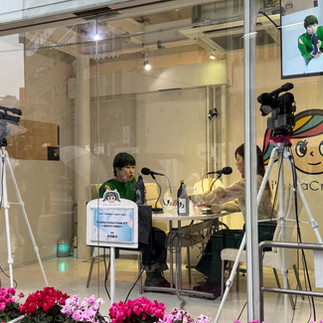

















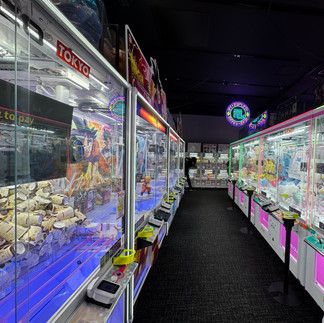















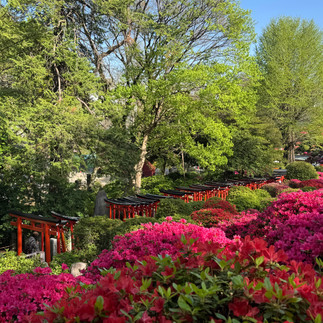













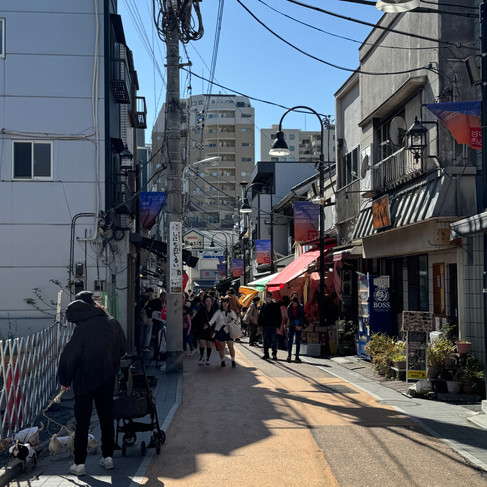












Great Stuff! How much weight did you gain? Not a very gentlemanly question, Sorry. enjoyed getting the full story of the Beckoning Cat!
Absolutely loved this post! So glad you had such a memorable time. Thanks for sharing.